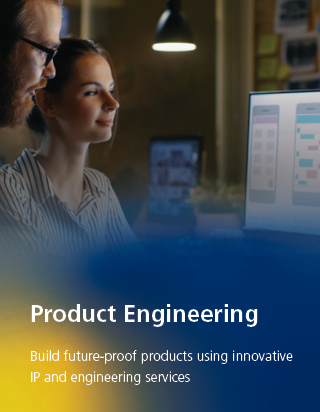Enhance Task Precision with Tailored Engineering Support: Topographical Surveying, Building Surveys, and Extra
Enhance Task Precision with Tailored Engineering Support: Topographical Surveying, Building Surveys, and Extra
Blog Article
Optimizing Resource Allocation Via Strategic Surveying Practices
In the realm of tactical resource allowance, the practice of checking stands as a critical device for companies aiming to enhance their performance and influence. By methodically accumulating insights and information, critical checking methods provide a roadmap for educated decision-making and resource circulation. Through the lens of stakeholder interaction, these surveys offer a method to tap into the diverse perspectives and requires that form an organization's landscape. However, the true power of tactical surveying lies not simply in information collection, but in the capacity to transform this info right into actionable techniques that propel an organization towards its objectives. With this lens, we start to unravel the intricate interaction between surveying techniques and resource optimization, setting the stage for a much deeper exploration of the techniques and strategies that underpin this critical procedure.
Significance of Strategic Checking Practices
Strategic evaluating practices play a vital role in identifying the effective appropriation of sources within organizations. By performing tactical studies, firms can collect important data and insights that help in making educated choices regarding the appropriation of sources such as workforce, time, and spending plan. These techniques supply a structured technique to understanding the present state of the company, recognizing locations for enhancement, and lining up resources with tactical goals.
One vital value of strategic surveying practices is that they aid organizations prioritize their efforts based upon real-time responses from stakeholders. This guarantees that sources are guided towards jobs or tasks that have the highest possible effect on attaining business objectives. Furthermore, tactical studies enable firms to adapt to changing market conditions, customer preferences, and inner abilities by continuously keeping an eye on and reviewing resource allocation techniques.
Celebration Insights From Stakeholders
Integrating comments from stakeholders is important for organizations applying critical evaluating practices to successfully assign resources and drive decision-making procedures. Stakeholders, including staff members, clients, providers, and community members, hold important understandings that can significantly affect the success of critical initiatives. setting out engineer services. Engaging with stakeholders with studies, meetings, emphasis teams, and feedback sessions enables companies to gain a much deeper understanding of their problems, needs, and preferences
By collecting understandings from stakeholders, companies can identify crucial locations for improvement, prioritize resource allocation based upon actual demands, and align critical objectives with stakeholder assumptions. Moreover, including stakeholders in the decision-making process promotes a feeling of ownership and commitment, bring about increased buy-in and assistance for strategic efforts.
Moreover, stakeholders usually use distinct viewpoints and cutting-edge concepts that might not have been considered internally. By actively listening to and integrating stakeholder comments, companies can boost their tactical surveying practices, make even more informed decisions, and inevitably accomplish better results.
Utilizing Data-Driven Approaches
Making use of data-driven techniques is paramount for organizations seeking to improve the performance of their resource allowance techniques and decision-making procedures. By leveraging data analytics and advanced modern technologies, organizations can draw out important insights to enhance resource allocation, recognize fads, and make educated decisions. Data-driven strategies enable organizations to assign sources based on empirical evidence instead of intuition, causing much more effective and efficient results.

Moreover, companies can use predictive analytics to forecast future source requirements and allocate resources proactively. construction surveys. By leveraging historic information and pattern evaluation, companies can prepare for demand changes and readjust their source appropriation techniques accordingly. Generally, welcoming data-driven methods equips companies to make educated choices that make best use of resource allotment effectiveness and drive lasting development
Identifying Locations for Renovation
Determining locations for improvement is an essential Get More Info step in the procedure of making the most of resource appropriation. By recognizing where traffic jams or inefficiencies exist within the company, decision-makers can guide resources in the direction of dealing with these certain areas.
One effective method for identifying areas for enhancement is carrying out regular performance examinations across different divisions or functions. Via these analyses, organizations can collect important understandings into locations that need attention or restructuring. Furthermore, seeking responses from employees whatsoever degrees of the company can offer a distinct perspective on potential locations for enhancement.
Moreover, check that making use of tools such as process mapping, SWOT analysis, and benchmarking can help in determining areas for renovation by highlighting staminas, weaknesses, possibilities, and risks within the company. By methodically checking out these aspects, companies can create an extensive understanding of where sources must be allocated to drive efficiency and effectiveness.
Practical Tips for Execution

Verdict
To conclude, strategic surveying practices play an important role in optimizing resource allotment by collecting understandings from stakeholders, utilizing data-driven approaches, and identifying areas for renovation. Carrying out practical suggestions for efficient surveying can result in even more informed decision-making and optimized resource appropriation strategies. By focusing on strategic surveying techniques, organizations can ensure that resources are alloted efficiently and successfully to satisfy their objectives and goals.
In the realm of calculated source allowance, the practice of checking stands as a critical device for companies aiming to enhance their effectiveness and effect.Strategic checking methods play a vital duty in identifying the reliable allowance of resources within organizations.Incorporating check this site out feedback from stakeholders is crucial for organizations implementing critical checking techniques to effectively assign resources and drive decision-making processes.Additionally, companies can employ anticipating analytics to forecast future resource demands and allocate resources proactively. By focusing on calculated checking methods, organizations can guarantee that sources are allocated efficiently and successfully to satisfy their objectives and goals.
Report this page